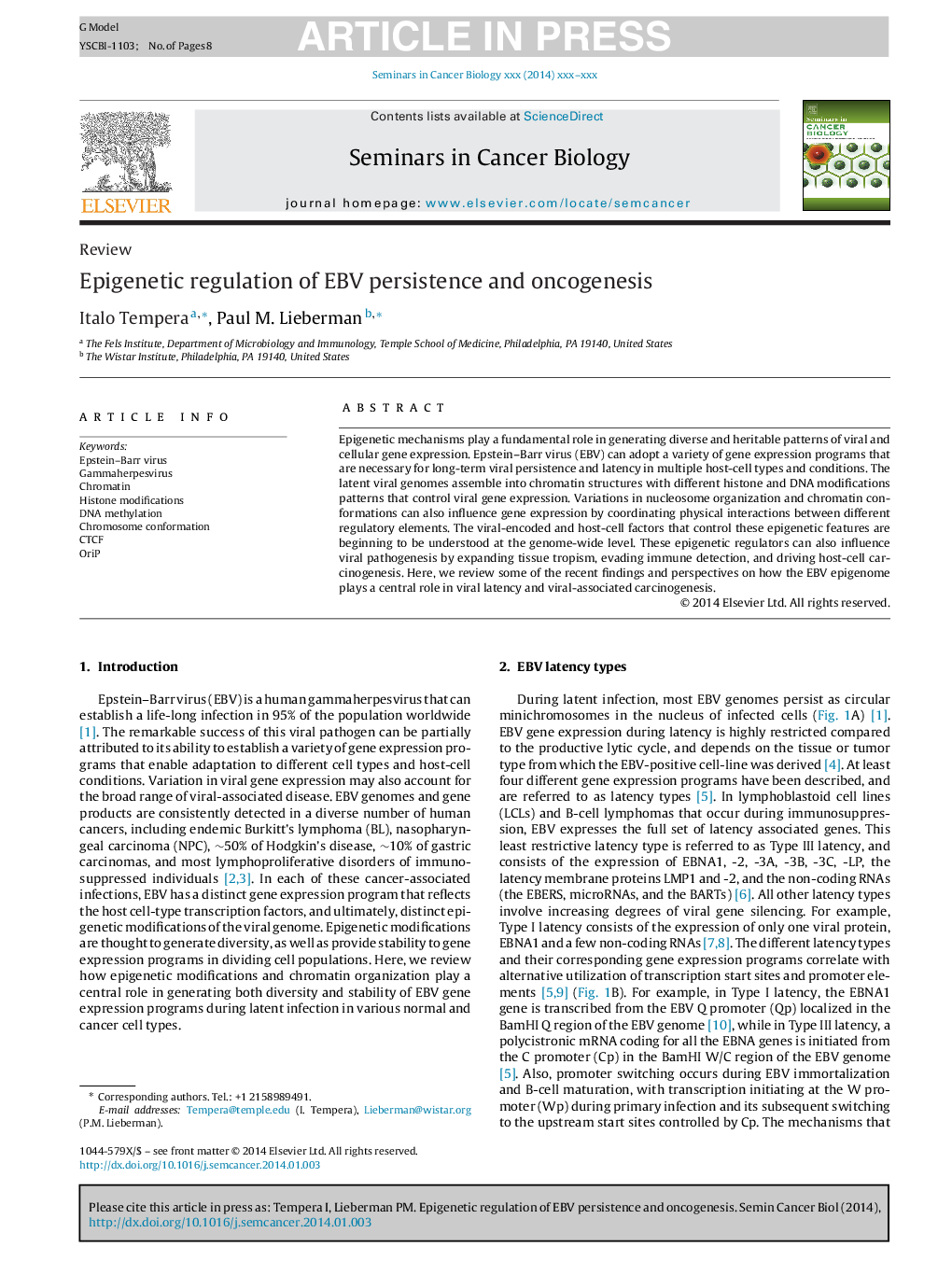| Article ID | Journal | Published Year | Pages | File Type |
|---|---|---|---|---|
| 8362361 | Seminars in Cancer Biology | 2014 | 8 Pages |
Abstract
Epigenetic mechanisms play a fundamental role in generating diverse and heritable patterns of viral and cellular gene expression. Epstein-Barr virus (EBV) can adopt a variety of gene expression programs that are necessary for long-term viral persistence and latency in multiple host-cell types and conditions. The latent viral genomes assemble into chromatin structures with different histone and DNA modifications patterns that control viral gene expression. Variations in nucleosome organization and chromatin conformations can also influence gene expression by coordinating physical interactions between different regulatory elements. The viral-encoded and host-cell factors that control these epigenetic features are beginning to be understood at the genome-wide level. These epigenetic regulators can also influence viral pathogenesis by expanding tissue tropism, evading immune detection, and driving host-cell carcinogenesis. Here, we review some of the recent findings and perspectives on how the EBV epigenome plays a central role in viral latency and viral-associated carcinogenesis.
Keywords
Related Topics
Life Sciences
Biochemistry, Genetics and Molecular Biology
Biochemistry
Authors
Italo Tempera, Paul M. Lieberman,
